Nature
Monthly Archive: December Natu
Who sings for blues? How Blue Whales became ingredients in everyday products
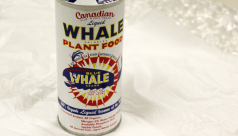
Living in Ontario, the Blue Whale in the vast ocean may seem a distant thought from our daily lives. But our history with these animals is more intertwined than we realize - for example, would you ever use fertilizer in your garden made from blue whales? Canadians used to! Read this guest blog post by ROM Biodiversity / Blue Whale team member Katherine Ing to find out a bit more about the other ways whale products became a part of everyday life during the peak of industrial whaling, and what that means for modern global whale conservation.
Winners of the 2017 Henry's #ROMmembers Capture the Wilderness Contest
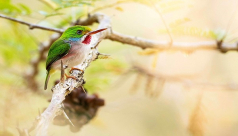
In celebration of the ROM's Wildlife Photographer of the Year exhibition, Henry's exclusively invited ROM Members to share their latest and greatest nature photographs for a chance to win a new Sony camera!
Stunning Images from Winners of the 2016 ROM Wildlife Photographer of the Year Contest
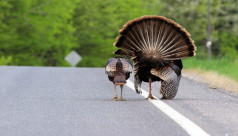
In celebration of the prestigious Wildlife Photographer of the Year exhibition, the Ontario-wide ROM Wildlife Photographer of the Year contest returned for its second year – this time with both adult and youth categories!
The Ultimate Collaboration: Wildlife Photographer of the Year, the ROM and EVC
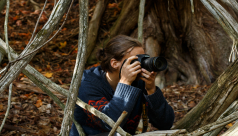
Guest blog by recent EVC grad Rhi More examining staff & student reactions to wildlife photography and the Environmental Visual Communication program.
An Interview with Deborah Samuel on "The Extraordinary Beauty of Birds"
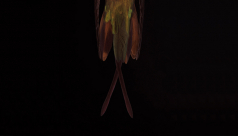
Guest blog by Environmental Visual Communication graduate David Coulson
Deborah Samuel's latest book, “The Extraordinary Beauty of Birds” is a stunning exposé of the ROM ornithology collection; an attempt, in her words, to bring these birds and feathers back to life. Here, EVC graduate David Coulson interviews Deborah about her photography and experiences working in collaboration with the ROM's Natural History collections.
Storytelling: Art, Culture, Nature
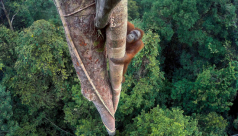
Guest blog by Environmental Visual Communication graduate Samantha Stephens
Art, Culture, Nature. They may be separate words, but if we consider them separate disciplines, we are doing a disservice to the potential of human wisdom. Without nature, there is no culture. Without culture, there is no art. EVC grad Samantha Stephens gives us some examples of how these themes intertwine in recent ROM research and exhibits, including the 2017 Wildlife Photographer of the Year exhibit, open now!
Farms, Cities, Animals, and the Museum
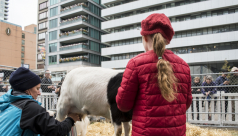
Guest blog by Environmental Visual Communication student Teghan Dodds
Goats are not something you’d expect to see within the confines of the city, and especially not on Toronto’s Bloor Street with its upscale shops and prestigious historical buildings. Read this blog written by 2016 Environmental Visual Communication student Teghan Dodds to find out why we had goats out in front of the ROM, and what that has to do with nature, art, and the ROM.
Not just for show: how and why museum specimens are collected
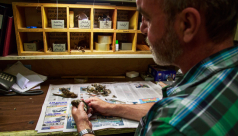
Guest blog by Environmental Visual Communication student Samantha Stephens
The sign on the door seemed quite appropriate. “Abandon all hope ye who enter here.” I imagine that, as this quote from Dante’s Inferno indicates, this might be what hell feels like. As this last barrier swings open and the dim room is revealed, the swarm of hundreds of tiny creatures moving across the concrete floor completes that vision. However, for some of the ROM’s tireless workers, this environment is heaven. Here resides the dermestid beetle colony. These ravenous beetles are eagerly seeking their next meal. Manoeuvring themselves into the crevices of skeletons, they strip the flesh from delicate specimens with more precision and speed than the nimblest of human fingers.
Sebastian Kvist: Leech Hunter

Guest blog by Environmental Visual Communication student Sally McIntyre
When most people think about the Royal Ontario Museum (ROM), they think of dinosaurs or mummies. However, it is the invertebrates that live on the ocean floor and crawl through the soil that make up the most diverse collection at the ROM. So who holds the daunting position of keeper of this vast museum collection? Meet Dr. Sebastian Kvist: Leech Hunter.
Trees for Toronto - Our Urban Forest
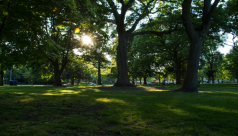
Guest blog by Environmental Visual Communication student Rhi More
Bringing more attention to trees is what the Royal Ontario Museum had in mind when its botanists and Creative Department partnered with the City of Toronto Urban Forester’s Office to create Trees for Toronto in 2004. EVC Student Rhi More decided to check out this ‘urban arboretum’ for herself, and share the findings with our readers.
